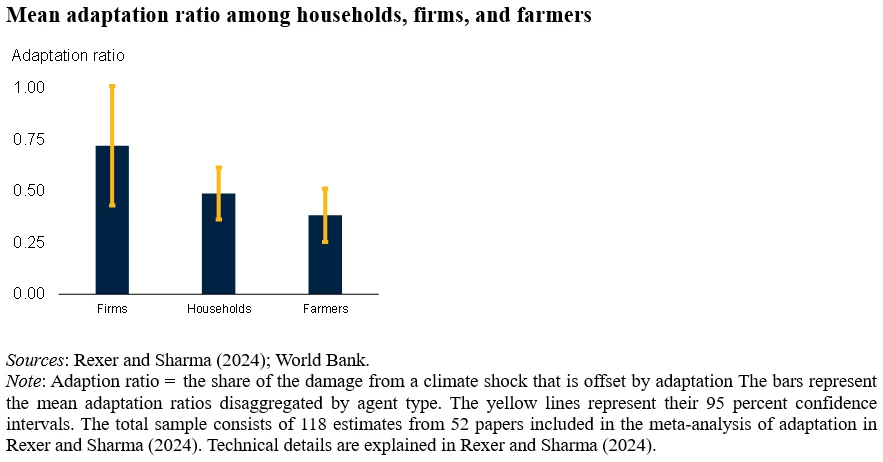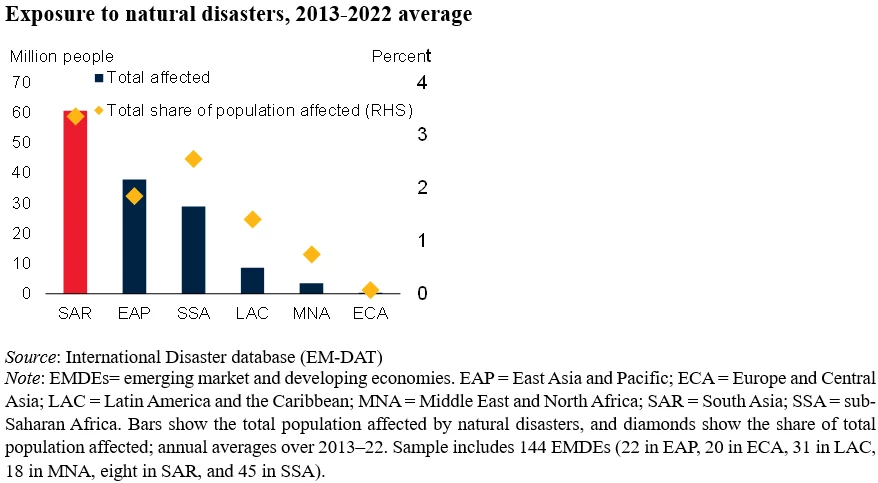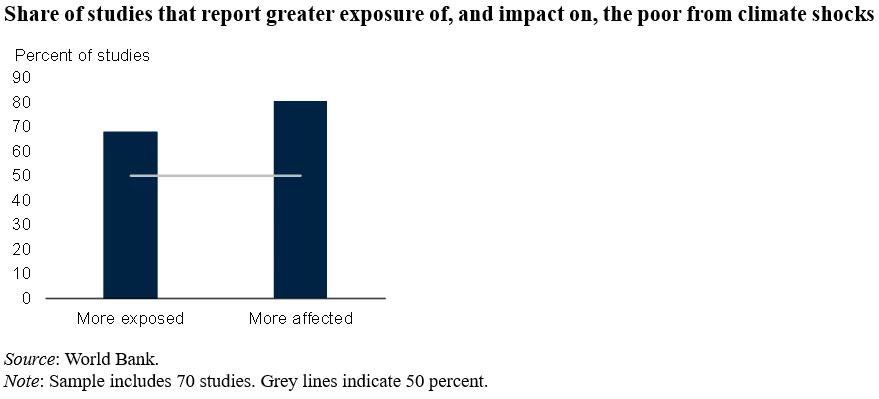
South Asia’s Vulnerability to Climate Change and the Importance of Adaptation
South Asia is highly vulnerable to climate change—including floods, extreme heat, and sea level rise. The burden of adapting to climate change falls disproportionately on poor households, which are typically more vulnerable to climate shocks. Globally, research on climate change identifies a variety of adaptation strategies by households, firms, and farmers, which have the capacity to offset nearly half of climate damage, on average. Firms have access to successful technology-driven adaptations, whereas households and farmers rely on less effective labor market adjustments. Adaptations that involve public support tend to be more effective than purely private strategies. Investing in broad public goods and social transfers that generate double dividends can help build resilience to climate change.
1. South Asia is highly vulnerable to climate disasters
South Asia is the emerging market and developing economy (EMDE) region that is most vulnerable to climate change. This reflects South Asia’s geography, which leaves it exposed to changes in groundwater availability, floods, extreme heat, and rising sea levels. About 60 million people per year have been affected by natural disasters in South Asia since 2013, more than in any other region in the world. Climate change is projected to reduce agricultural yields, industrial output, labor supply, productivity, and human capital in South Asia.
2. Globally, the poor tend to be more exposed to, and affected by, climate disasters
In a systematic literature review, two-thirds of studies found that the poor are more exposed to climate shocks. Studies of droughts, heat, and floods in particular were likely to find the poor were more exposed to climate than average households. Furthermore, 80 percent of studies found that the poor were more adversely affected by climate shocks than other households. The poor typically suffer greater income and human capital losses from climate events and will disproportionately bear the burden of private adaptation to climate change.
3. Adaptation can work, but effectiveness varies substantially across domains
Households, firms, and farmers adapt to climate change in myriad ways. Factories may adopt cooling technologies to prevent productivity losses during heat waves; farmers may plant drought or flood resistant varieties to boost yields; households may migrate or seek employment in less climate-exposed regions or sectors. The degree to which these behaviors offset the damage from climate change is called the adaptation ratio. A recent systematic literature review finds that, on average, such adaptive behaviors offset 46 percent of the damage from climate change. However, adaptation ratios vary widely across settings: while firms recover 72 percent of climate losses, this number falls to 49 percent for households, and just 38 percent among agricultural producers.


Join us, as fellow seekers of change, on a transformative journey at https://sdgtalks.ai/welcome, where you can become a member and actively contribute to shaping a brighter future.








